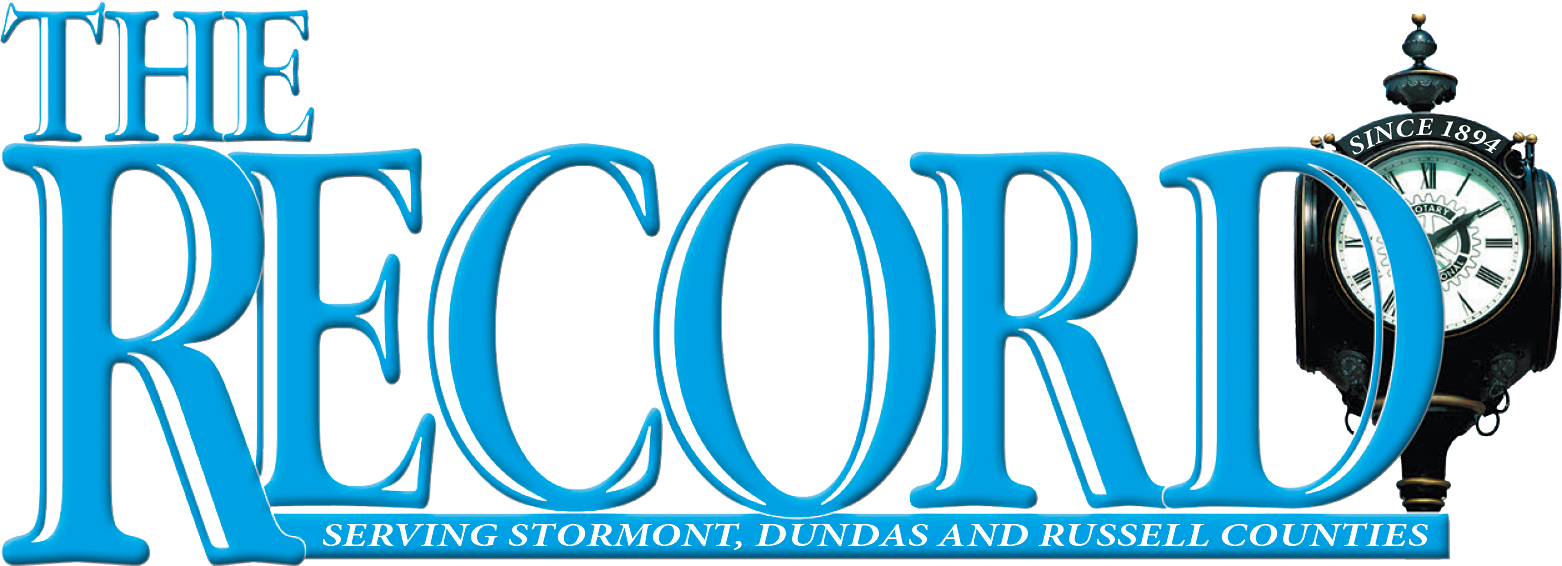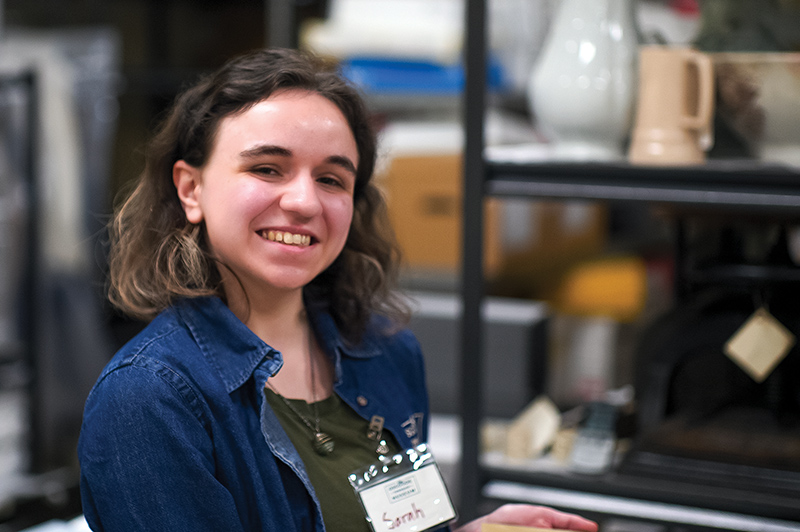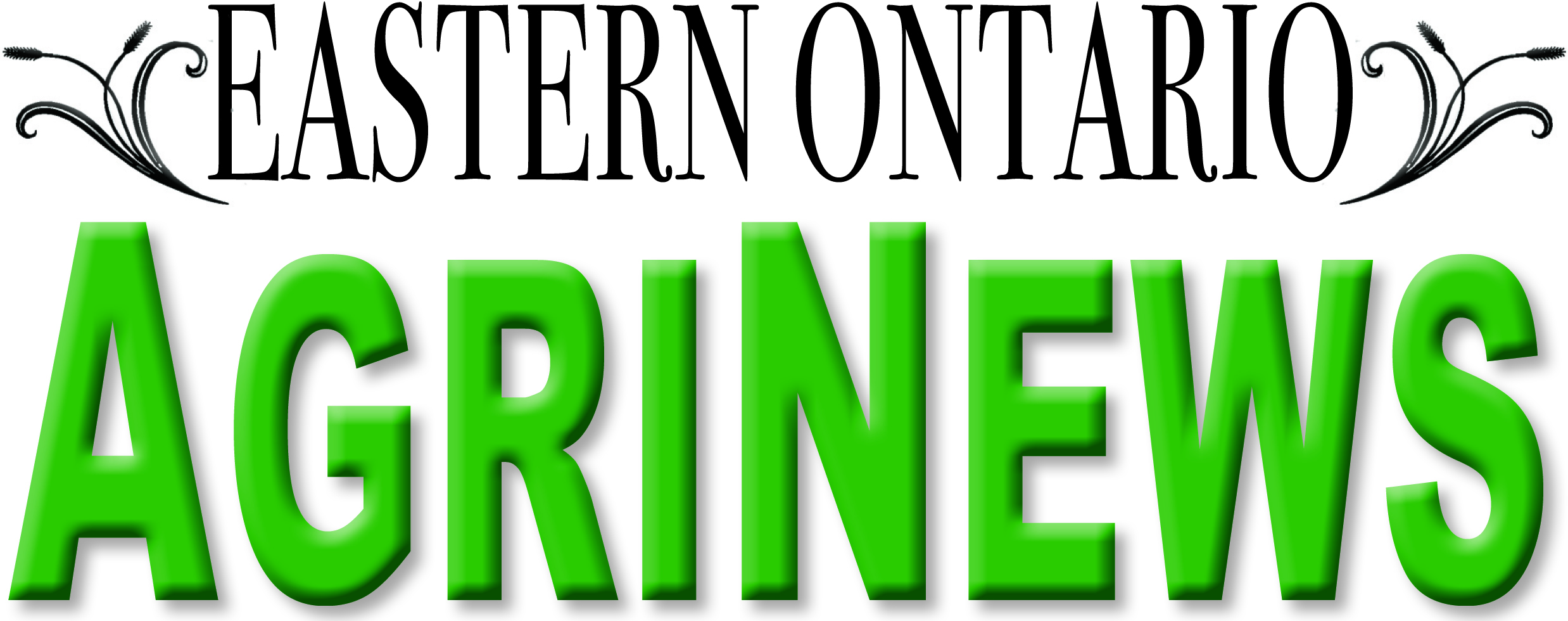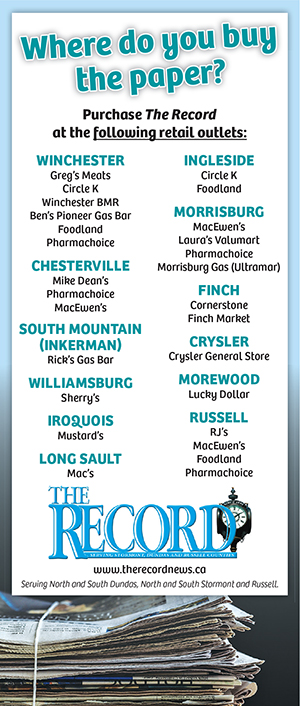Sarah Verreault is the collections officer at the museum and oversees what happens to the permanent collection, everything that comes in and out. She was giving tours of some of the “behind the scenes” areas of the museum during Doors Open. Tinkess Photo
VERNON – One of the most popular events for both residents and visitors to the National Capital is Doors Open, which offers entry to numerous businesses, organizations, and buildings where the public usually doesn’t have access. This year there were 94 locations in the program, including the Osgoode Township Museum in Vernon.
The Osgoode Township Museum has been serving the community, first as a historical society, since 1973. It tells the story of the agricultural and rural heritage of the area, with a focus on agriculture in the former Osgoode Township. The Museum houses a collection of approximately 10,000 artefacts, with everything from housewares and clothing to full-sized tractors and other farming equipment. Visitors can wander around the grounds, orchard and 10,000 square foot heritage garden modelled after a 1907 School Garden.
James Jensen, the museum’s executive director says Doors Open is a great opportunity to give people a peak behind the scenes.
“What we’re able to do today is actually give people a peek into the collection storage in a sort of controlled fashion because otherwise we don’t want people to get in,” said Jensen. “Because it’s when you can take a peek, it’s a little crowded and people like to touch things. They’ll come in and go oh, my grandmother had one of those. Yeah, I can touch this one. No, no, you can’t. It is a funny thing: When it comes in here, the way it gets treated changes just so that we can preserve it forever.”
In addition to the main building, which is a former school, the museum has a huge barn out back that has all their large, agricultural and trades objects. It’s open all the time, so people can go in and look at the items. More delicate items, such as furniture are stored in Kemptville in a climate-controlled space.
Jensen says there is a lot to show and explain to people, especially if they have no prior knowledge of agriculture, especially in a historical context. “They don’t have that unless they are on a farm,” said Jensen. “They don’t have a connection to it anymore. I mean, people have seen tractors, at least have an idea of what farm machinery is. But most of the people who come in, unless they are getting older, they don’t know what the machines do. They have like a vague idea. But most of its mysterious. Everything with electricity and gas engines, yeah, but most of what’s out there is animal and man (powered). So, it’s just completely alien.
“Imagine never having power?” he adds. “And even that’s a hard conversation to have, because, of course, they can’t imagine how not having power would be because they’ve never not had power. They would have just lived different lives. They couldn’t imagine what that would have been like, it would have been science fiction.”
Sarah Verreault is the collections officer at the museum and oversees what happens to the permanent collection, everything that comes in and out. She says she has been interested in history for a long time. “When I was really young, I started volunteering at a living history museum in London, Ontario, with my mom,” said Verreault. “She’s not quite the history person, but she knew that I was really into it, so I got very lucky.”
Verreault was giving tours of the climate-controlled storage area of the museum during Doors Open. It’s sort of a combination workspace in collection storage, main collection, storage, everything that sort of fits into a building that isn’t a tool of some kind tends to be in here. We’ve got everything from documents to artwork, pieces of clothing, uniforms, lots of household equipment, typewriters, all those things, lots of photographs.
When she’s doing the tour, Verreault says there are certain artefacts that she is going to highlight. For example, there’s a large sousaphone in storage, which was used by the Metcalfe brass band. She produces a photo of them in 1906 with a very similar instrument, which was likely an earlier version since it’s a little bit smaller. This is what is known as provenance, the history of the lifecycle of the item, which is every single person that encounters it, how it was used, if it’s been altered in any way, and that continues even into the museum. Does it go on display? Does it get used for research?
“We try to gather as much as possible,” said Verreault, “Because if you don’t when it comes in, it tends to just disappear. It’s hard to catch up once it’s already inside, because there’s always new things coming in.”
As is the case with every museum everywhere, space is an issue, but the Osgoode Township Museum does an excellent job with what they have to work with, trying to preserve a record of the world that most today will never experience, but which provides an understanding that helps to prepare for a future not yet imagined.
The Osgoode Township Museum will be holding a pop-up market on June 9th from 12:00 p.m. until 4:00 p.m., featuring local artisans, produce, plants, and much more. They are located at 7814 Lawrence St. in Vernon (just west of highway 31). For more information you can visit their website at osgoodemuseum.ca.

Terry Tinkess is a professional photographer, educator and journalist. He has been making a living with a camera and keyboard since 1999 and has been featured in such publications as The Ottawa Citizen, Cornwall Standard Freeholder, The Globe and Mail, The Miami Herald, Ottawa Construction News, The Ontario Construction Report, Ontario Home Builder Magazine, Reed Construction Data, Canadian Potato Business and most recently, The Record and Eastern Ontario AgriNews. Terry lives in Ingleside, Ontario with his wife Brenda, Mia the anxious Pittie and cats Wally and Chubbers.











